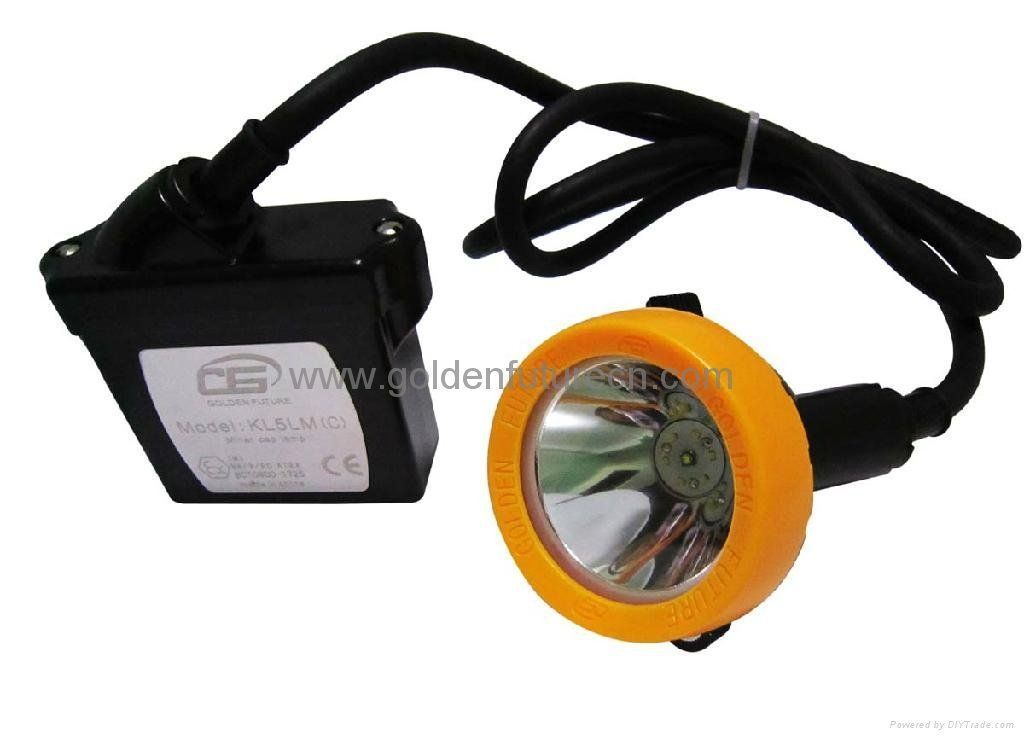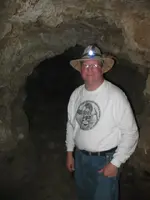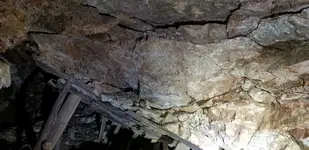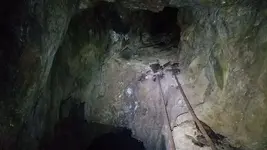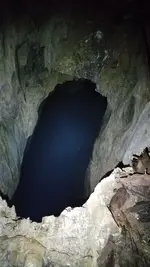Blackchipjim,
We explore a lot of old mines so there's not a lot that keeps us out, but here are a few things I watch for.
- At the adit or collar, are there large timbers that are about to fall in? These are the same as "widow makers" in a forest. The timbers weigh a lot and one falling on you can seriously injure or kill you. Even a slight bump can dislodge them.
- At the adit or collar, are there large rocks or boulders that overhang your path of travel? Depending on their size and height, can be more dangerous than the timbers.
- Evaluate how dangerous it is to access the mine. We have visited some mines where we had to skirt around a shaft to make our way into a drift. One slip can lead to a long fall.
- Are there signs that others have been in and out of the mine? Tracks leading in and out of a mine indicate that others have been in there. It's no guarantee that the mine is "safe", but your odds have improved.
- Do you have to climb up a precarious route to enter the mine. Climbing up is much easier than climbing down. Don't get yourself into a situation where you are stranded at the mine opening and can't get safely back down.
Although your post requested information about what would keep me out, I would like to add a few thoughts about preparation before heading in.
- Make sure someone knows EXACTLY where you are and when you expect to be back. Years ago I was in search and rescue. It can take days to locate someone's abandoned vehicle based on a vague location like, "I'll be out around Goodsprings somewhere." If you are lost or injured in a mine, you may not have days to wait before they can locate your vehicle, figure out where you are, and organize a rescue. We use a Spot tracker to send the exact lat/lon before we enter a mine, then we send an "OK" message as soon as we exit. If we move to another location, we start the process over. If we are overdue, rescue crews have our exact location. Also, keep in mind that many search and rescue organizations will not have a cave/mine rescue team. It will take additional time for a trained team to get to your location.
- Don't go solo. This one just makes sense. Have someone with you in case something goes wrong. My preferred number is three. If one person gets injured, one goes for help while the second stays with the injured party.
- Never go underground without proper lights. I never go in a mine without at least two lights...and that's just to stick my head in for a quick look around. If I'm going out of sight of the entrance, it's three lights plus extra batteries for every light. Two lights are head mounted, and one is hand held. My backup headlamp is in my backpack and my hand held is in my front pocket. If you need to scramble up or down, trying to hold your flashlight and climb at the same time is not a good idea. Know how to change batteries in complete darkness.
- Do not go underground without a helmet of some sort. It doesn't have to be a climbing helmet like we wear. A hard hat with a chin strap will do, or an old skateboard helmet. I started out wearing a bicycle helmet. You can bump your head hard enough to knock yourself unconscious. You can also be knocked out by a falling rock. Lastly, your helmet is where you mount your headlamp so you have your hands free.
- Take water with you EVERY time you go into a mine. No one plans to be in a car wreck and no one plans to be stuck in a mine. The water you take may be what keeps you alive during a rescue.
- Dress appropriately. Long pants, long sleeved shirt, and gloves will help protect you from scratches, scrapes, and ever present nails.
- If you are serious about wanting to go underground, see if you can find someone in your area who is an experienced mine explorer. Get some basic experience with someone that knows their way around. Like all things in life, watch out for the idiots who want to "teach" you!
I don't encourage people to explore old mines. It's dangerous, but so is riding a motorcycle, skydiving, and scuba diving. If you are going to do it, these are a few things you should consider.
Joanne



